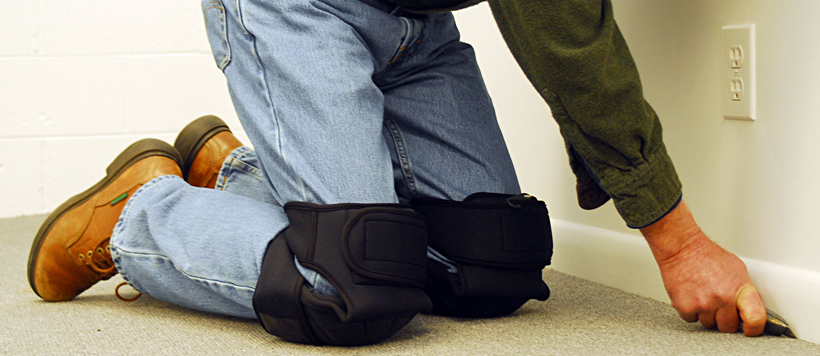Why is Knee Protection Important?5 June 2023 | Admin
Why wear kneepads?According to statistics, 60 per cent of knee injuries result from wear and tear of the knee. One of the most effective ways to prevent this is by using knee pads. Here are some of the benefits of knee pads:
How are kneepads tested?EN14404 is the European standard which specifies the performance requirements for kneepads. Here are 3 examples of specific tests conducted as part of the standard: Shock Absorption TestThis test aims to simulate kneeling several times in quick succession. It involves a machine using a force of five joules of energy which strikes various parts of the knee pad five times within five minutes. The transmitted force (i.e., the residual impact not absorbed by the kneepad) is measured in Kn. For the kneepad to pass, the mean average of the 5 tests cannot exceed 3Kn and no single measurement can exceed 4Kn. Penetration resistance testThis test is used to assess the performance level of a kneepad to protect the knee against objects. To pass the test, the internal surface of the kneepads must not deflect by more than 5mm when a particular level of force is applied.
Restraint testingThis test is used to gauge how well the kneepads stay in position during use. This test is solely for Type 1 strap-on kneepads. The straps must have a maximum width of 30mm and cannot stretch more than 40mm when a force of 10N is applied. This is to ensure that they stay in position and that they are not overly constrictive, causing discomfort to the user. A Type 1 kneepad is deemed to pass the restraint test based on feedback collated from test subjects. S U M M A R YTo summarise this blog, knee protection is very useful to protect your patella from fractures and in the long-term, osteoarthritis. Knee protection is most useful for workers who spend a substantial time kneeling (i.e., those in the flooring industry). The safety standard used to test knee pads is EN14404 and the three tests used to test the item's usefulness are based on shock absorption, penetration resistance and restraint.
|
|
 Items: 0 Total: £0.00 |


















